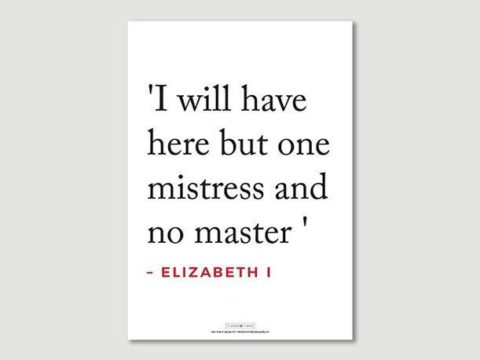Jane Boleyn and the Greenwich Protests of 1535
by Sylvia Barbara Soberton
Another Myth Busted
Jane Boleyn is everyone’s favourite villain. According to a persistent myth about her, Jane testified against Anne and George Boleyn in May 1536, her testimony being crucial in sending them both to the scaffold. Yet this view is far from accurate: Jane’s name appears only once in connection to Anne Boleyn’s downfall, and she was not named as one of the Queen’s “first accusers”.
Yet another myth is that Jane’s relationship with Anne Boleyn was fractured severely following Jane’s banishment from court in 1534. In the autumn of that year, Anne enlisted Jane’s help in getting rid of Henry VIII’s new mistress. This young and beautiful, but sadly unidentified, woman was said to have been sympathising with Henry VIII’s elder daughter, Lady Mary, and showed blatant disrespect towards Anne despite being her servant.
Alerted to the intrigue aimed at removing his new mistress from court, Henry VIII banished Jane Boleyn instead. This is often seen as a breaking point in the relationship between Anne and Jane Boleyn; the Queen was unable to use her influence in order to stop Jane’s banishment.
One of the arguments used to highlight the fractured relationship between Anne and Jane Boleyn is an incident that occurred in October of 1535. While the court was away on an annual summer progress in Hampshire, “a great troop of citizens’ wives and others, unknown to their husbands” demonstrated at Greenwich in favour of the Lady Mary, Henry VIII’s disinherited daughter, “weeping and crying that she was Princess, notwithstanding all that had been done”.[1] They were dispersed and the ringleaders promptly sent to the Tower.
Historians usually suggest that among the women who were punished for supporting Lady Mary so publicly and vociferously were Anne Boleyn’s kinswomen, Jane Boleyn, Vicountess Rochford, and Katherine Howard (not to be confused with Henry VIII’s fifth queen), wife of the Queen’s half uncle William. The evidence for their involvement rests entirely on the marginal note of the Bishop of Tarbes’s account naming “Millor de Rochesfort et Millord de Guillaume” which means “my Lord Rochford and my Lord William”.[2] Yet this note clearly names men, not women. Also, William Howard’s wife could not have taken part in the demonstration because she died on 23 April 1535 and was buried in the parish church of St Mary at Lambeth, where there is a monument to her memory.[3] William Howard did not remarry until June 1536; his second wife would be Margaret Gamage, one of Anne Boleyn’s maids of honour.[4] It thus appears that the marginal note suggests that George Boleyn and his half uncle William Howard were tasked to imprison the ringleaders, not that their wives took part in the demonstration.
The myth that the Ladies Rochford and Howard protested in favour of the Lady Mary originates with Paul Friedmann, Anne Boleyn’s nineteenth-century biographer, who went as far as to claim that William Howard’s wife “was clearly hostile to Anne, and she and Lady Rochford were great friends.”[5] Friedmann had clearly mistaken William Howard’s wife with Katherine Daubeney, née Howard, Countess of Bridgewater, whose relationship with Anne was strained for a time before they repaired their friendship.
It remains unknown when Lady Rochford returned to court after her 1534 banishment, but Sir William Kingston, Constable of the Tower, mentioned her writing a letter to her imprisoned husband and promising him to intercede with the King on his behalf. She was also interrogated prior to Anne’s arrest on 2 May 1536, confessing that Anne told her that Henry VIII “had neither the skill nor the virility to satisfy a woman.”[6] She was clearly back at court and interrogated, as most of Anne Boleyn’s ladies-in-waiting were.
[1] Letters and Papers, Henry VIII, Volume 9, n. 566.
[2] Ibid.
[3] Arthur Collins, The Peerage of England, Volume 5, p. 120.
[4] Editors of the Letters and Papers misdated the marriage to 1533, yet in 1533 William Howard was still married to Katherine Broughton. Muriel St Clare Byrne, The Lisle Letters, Volume 3, p. 440.
[5] Paul Friedmann, Anne Boleyn, Volume 2, pp. 128-129.
[6] Letters and Papers, Henry VIII, Volume 10, n. 908.


